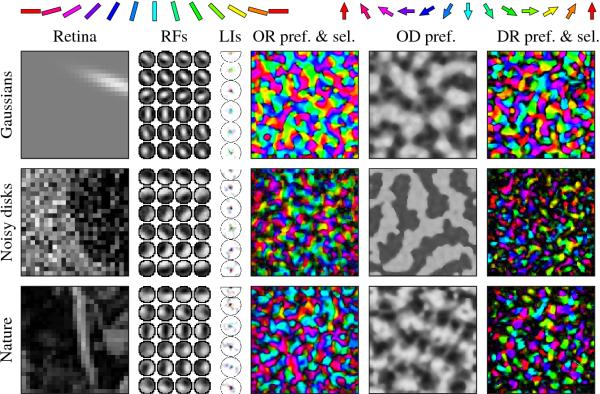
Click on the image to see a PDF version (for zooming in)
Fig. 5.32. Effect of training patterns on OR/OD/DR maps. From
left to right, each row shows a sample retinal activation, final
spatiotemporal receptive fields of sample neurons with lags 3, 2, 1,
and 0 from left to right, their inhibitory lateral connections, the
orientation preference and selectivity map, the ocular dominance map,
and the direction preference and selectivity map. The top row shows a
network trained with oriented Gaussians, the middle with noisy disks,
and the bottom with natural images. All networks develop realistic
orientation maps. Maps with Gaussian inputs and noisy disks develop
only smooth, two- or three-lobed RFs, whereas networks with natural
images develop a wide variety of RF types, corresponding to the wide
range of patterns seen in natural images. In each case, the lateral
connection patterns follow the features in the map. These results
show that joint OR/OD/DR maps can develop from a variety of abstract
and realistic input stimuli.
|